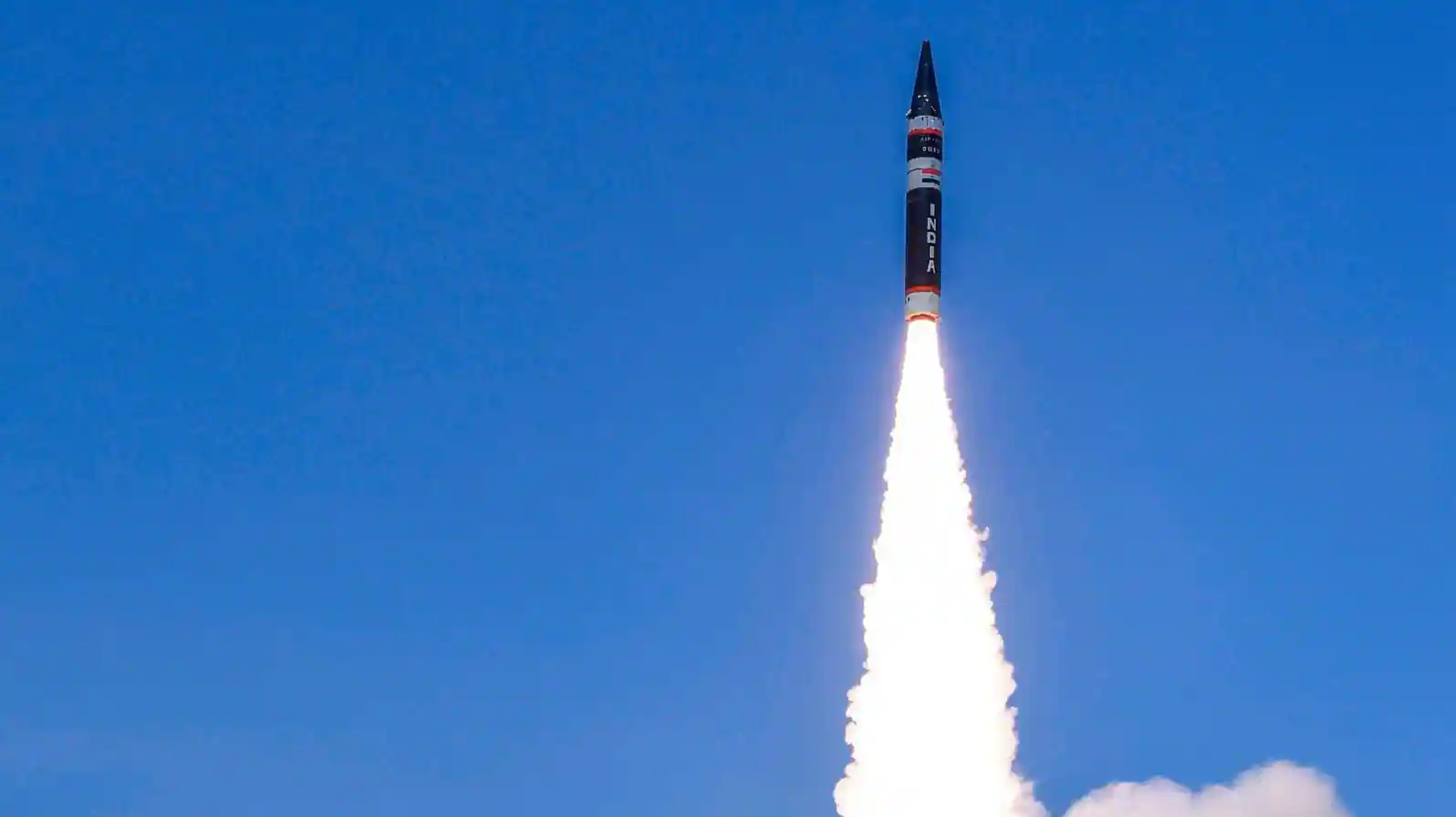India’s Agni-P (Prime) ballistic missile is the latest addition to the country’s growing nuclear arsenal. While a Chinese military expert casts doubt on the missile’s actual capability, an Indian analyst has countered this by saying Agni-P is “aimed exclusively at China”.
India has recently test-fired the next-generation nuclear-capable missile amid border tensions with China. With a range of 1,000-2,000 km, Agni-P is said to be the smallest and lightest of the Agni series and is equipped with a canister-based launch system.
It enables the missile to be launched via a canister and makes its transportation and movement easier.
While congratulating Defence Research and Development (DRDO), India’s Defence Minister Rajnath Singh noted the advanced technologies used in the missile including “composites, propulsion systems, innovative guidance and control mechanisms and state-of-the-art navigation systems”.
“The Agni-P missile would further strengthen India’s credible deterrence capabilities,” Singh said.
South China Morning Post quoted Chinese defense analysts who compared India’s Agni-Prime with China’s DF-21D, known as an “aircraft carrier killer”, the world’s first anti-ship ballistic missile.
According to Song Zhongping, a Chinese military commentator and a former PLA instructor, the Agni-P will need further testing to prove its anti-ship capability after the successful first firing.
At €7.8B, Why Indian Rafale Jets Are ‘Double The Cost’ Than Egyptian Rafales?
Why Did Netizens ‘Mock’ Nigeria For Importing JF-17 Jets From Pakistan?
“Hitting a warship with a ballistic missile is a complex systematic project. It takes not only the missile itself but also many other support systems – such as satellite navigation, terminal target identification, guidance, and maneuvering systems,” Zhongping told SCMP.
The Agni Series
The Agni missiles are a part of India’s Integrated Guided Missile Development Program (IGMDP), the brainchild of scientist and former President Dr. A.P.J Adbul Kalam. They were developed by the DRDO to act as deterrence & meet the country’s security requirements.
The first ballistic missile of the Agni series, Agni-I, was inducted into service in 2004. The nuclear-capable version of Agni-I went for trials from 2010 onwards.
While Agni-I and II are medium-range missiles, capable of reaching distances more than 700 km and 2,000km, Agni-III and IV are intermediate-range ballistic missiles reaching beyond 3,000km.
The nuclear-capable inter-continental ballistic missile (ICBM), Agni-V is the longest of the Agni family with a range of 5,000-plus kilometers. It provides a nuclear deterrence against China, with the capacity to reach Beijing, China’s capital city.
It has successfully been test-fired several times and the induction into the armed forces is expected soon.
First batch of Agni-V, which can hit targets across China, to be inducted ‘soon’https://t.co/2g5HcYJwQr pic.twitter.com/dzQFXHDxjA
— ThePrintIndia (@ThePrintIndia) July 1, 2018
Deterrence Against China
After reports of possible deployment of Agni-V missile in January, Chinese state-run Global Times in an editorial called India’s recent efforts in upgrading military capabilities as “going too far with strategic overdrafts”.
The South China Morning Post also noted that Agni-P is unlikely to pose a big threat to China given that major cities like Beijing are beyond its reach.
However, Indian defense analysts have lauded the timing of the tests amid the border tensions between India and China.
Speaking to The EurAsian Times, Abhijit Iyer-Mitra, a research fellow at the Institute of Peace and Conflict Studies, noted that the “Agni-Prime is aimed exclusively at China since we’ve achieved nuclear deterrence with Pakistan way before“.
“The more you keep demonstrating these missiles, the more deterrence you technically build up. There’s more to it as there are several steps to deterrence and at some point, you might have to leak photos of 15-20 of them amassed somewhere,” he said.
When asked about what makes Agni-P more effective against China given its limited range of 2,000 km as compared to Agni-V (which can reach anywhere in China), Mitra said the Agni-Prime is different from the previous missiles.

“Many of the earlier missiles went through stage-separation which hasn’t been used for a while now, giving a single solid missile. It’s much smaller, more compact and shows that you’re developing your missile technology. Demonstrating that you’re developing is an important part of deterrence,” he said.
“When you’ve got a shorter, smaller missile which is capable of hitting places like Chengdu, Sichuan and possibly Hong Kong, it adds a different layer of deterrence,” he noted.
Calling it a “deterrence of modernization”, Mitra noted that “Agni-P is a more modern missile within a range and regions that we’ve already covered but having a much shorter reaction time and easier to transport and other improvements makes it of a different caliber.
“Modernization brings a different type of deterrence for which an extension of range isn’t always necessary,” he further said.
Mitra noted that since the successful test-firing, there have been no reactions from either China or Pakistan, India’s arch-rivals.
“I did not hear any reaction at all, either from China or Pakistan,” he said.
READ MORE
Why India’s Ladakh Region Is Crucial For China’s Rise As An Economic Super-Power?




